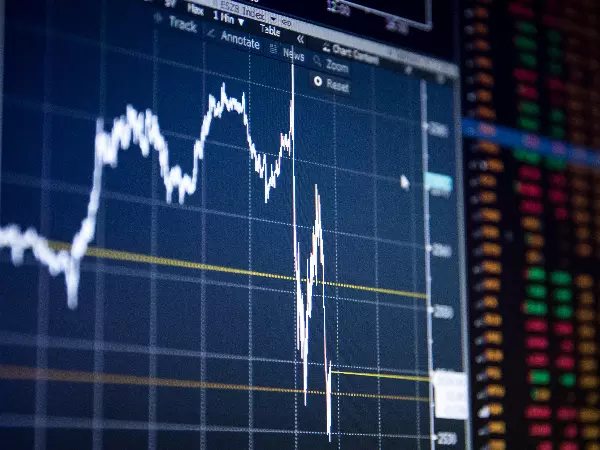Long squeeze: everything you need to know
A long squeeze in trading can mean good news for some, and bad news for others. Discover the ins and outs of a long squeeze, and find out how it can impact your open positions.

What is a long squeeze?
A long squeeze is when the price of an asset suddenly drops more than anticipated. The decline can be brief, or it may last for some time. Regardless of the duration, it can be bad news for investors or traders who hold long positions.
When a significant price drop occurs, buyers are often ‘squeezed’ out of their positions – closing them in an attempt to limit any further loss. The squeeze adds to the downward momentum, as the balance between buyers and sellers shifts, and a bull market reverses to a bear market.
Traders who hold leveraged positions (via CFDs) are more vulnerable when a long squeeze occurs, as leveraged trading magnifies profits and losses.
Learn more about the impact of leverage on your trading
What is a market squeeze?
When a large number of traders are forced out of their positions due to sudden rising or falling prices, it is known as a market squeeze. Some high-volume markets are more susceptible to squeezes than others, but the general assumption is that it can happen in any market at any time.
How to identify a long squeeze
To identify a long squeeze before it happens, many traders and investors will first look at the number of shares a company has in circulation – called the float. If there is a limited amount of shares available to the public, it means fewer people control the share price in the market (based on supply and demand). So, when a sell-off occurs, it will be more dramatic, resulting in a higher probability of a long squeeze.
A long squeeze could be imminent if a stock’s price has been increasing and buying volume is high. This is because the market becomes overbought and stocks can become overvalued. Once this happens, many people will try to sell before the market turns bearish.
Long squeezes will often catch the market off guard, and limited float and rising stock prices do not guarantee that a long squeeze will happen. The event that triggers the squeeze will depend on the market. For example, poor company earnings can cause stock prices to drop suddenly, while interest rate changes can trigger a long squeeze in the forex market.
Long squeeze example
A recent example of a long squeeze can be seen on the below West Texas Intermediate (WTI) oil price chart (US crude with IG). Between 9 April 2020 and 21 April 2020, the benchmark’s price dropped suddenly (-46%), creating a long squeeze. The price recovered slightly, but on 26 April 2020, another sharp drop (-22%) caught buyers off guard.
The squeeze was attributed to an overload of crude supply and fears over the capacity of oil storage facilities, caused by the Covid-19 pandemic.

Long squeeze vs short squeeze: what’s the difference
A long squeeze is the opposite of a short squeeze. In other words, a short squeeze will occur when the market price of an asset sees a sudden spike, causing panic among short sellers. As with a long squeeze, short sellers will often abandon positions when a short squeeze occurs to try and limit their losses. However, both traders and investors stand to profit from a short squeeze.
How to trade a long squeeze
To trade a long squeeze, you’d need to open a position that stands to profit from a decrease in an asset’s price. In other words, you’d open a position to sell (go short) using CFDs. Both are traded on leverage, which means you can open a position with just a small deposit – called margin.
To start short selling using CFDs, follow these simple steps:
- Open an IG trading account: it only takes a few minutes to open an account, and you’ll get access to our award-winning trading platform for desktop and mobile
- Find an opportunity: we offer various tools, including the IG market screener, to help you find what you’re looking for
- Place your trade: when you’re ready to trade, open your first position by selecting the market you want to short and choose ‘sell’ on the deal ticket
Learn more about short selling in this guide
Note that investors can’t gain anything from a long squeeze, as they buy physical shares in the hopes that prices will go up. Declining share prices will result in a loss if they don’t sell the shares before the drop. However, they can hedge their investment by shorting the market using borrowed shares, covering losses with gains from a short position.
Long squeeze summed up
- A long squeeze is when the price of an asset falls quickly and unexpectedly
- It can have a negative impact on investors, and traders with long positions
- Long squeezes can catch traders and investors off guard – forcing them to close their positions in an attempt to limit losses
- You can trade a long squeeze by opening a short position using CFDs
- Traders who have a short position open during a long squeeze stand to make a profit
Open your IG account now to start trading, or try our risk-free demo.
IGA, may distribute information/research produced by its respective foreign affiliates within the IG Group of companies pursuant to an arrangement under Regulation 32C of the Financial Advisers Regulations. Where the research is distributed in Singapore to a person who is not an Accredited Investor, Expert Investor or an Institutional Investor, IGA accepts legal responsibility for the contents of the report to such persons only to the extent required by law. Singapore recipients should contact IGA at 6390 5118 for matters arising from, or in connection with the information distributed.
The information/research herein is prepared by IG Asia Pte Ltd (IGA) and its foreign affiliated companies (collectively known as the IG Group) and is intended for general circulation only. It does not take into account the specific investment objectives, financial situation, or particular needs of any particular person. You should take into account your specific investment objectives, financial situation, and particular needs before making a commitment to trade, including seeking advice from an independent financial adviser regarding the suitability of the investment, under a separate engagement, as you deem fit.
Please see important Research Disclaimer.

Explore the markets with our free course
Discover the range of markets you can trade on - and learn how they work - with IG Academy's online course.

